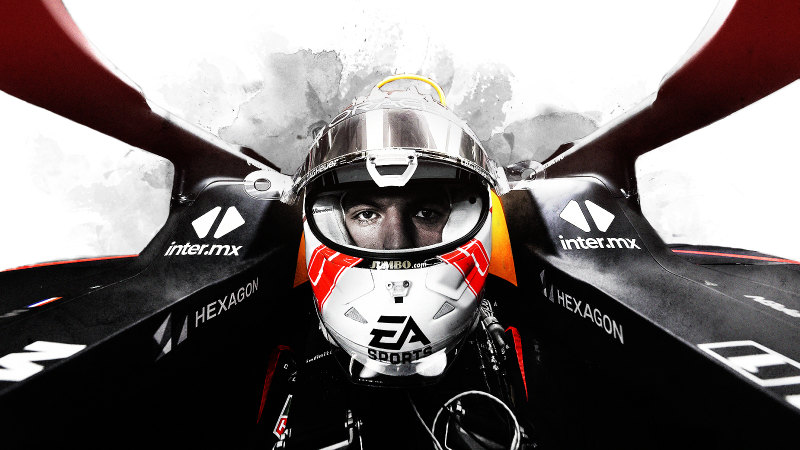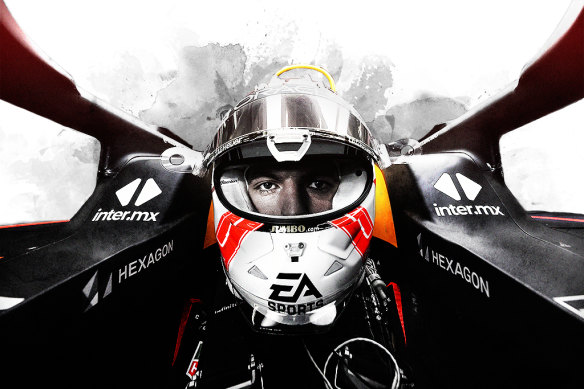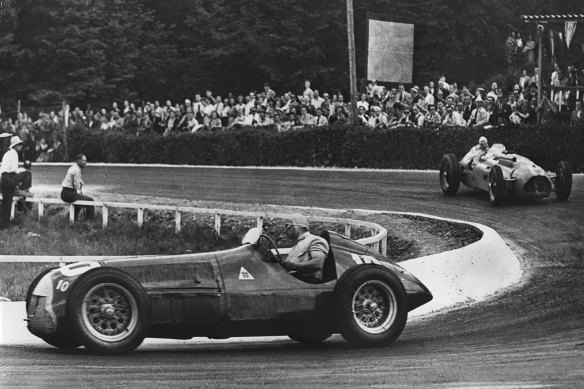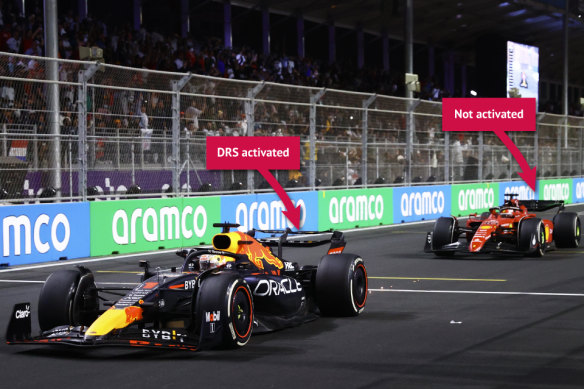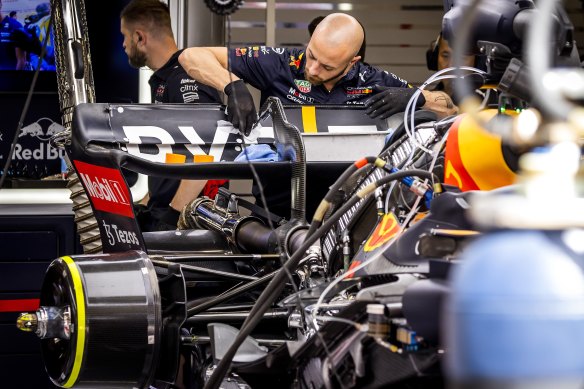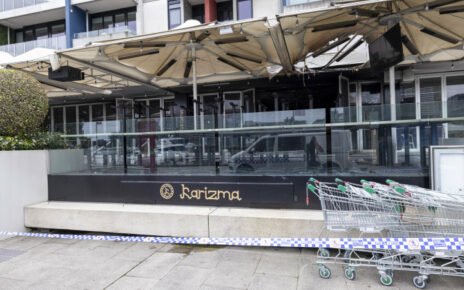It’s designed to keep spectators on the edges of their seats and Australia’s grand prix circuit has added more of it. Strap yourself in while we decode DRS.
Spanish two-time Formula 1 world champion Fernando Alonso’s Ferrari is rocketing along close to 200 km/h down the pit straight at Albert Park. In front of him, the silver Mercedes of Nico Rosberg weaves across the track, parrying the Ferrari’s every dart and thrust. Alonso seems stuck. But really, he’s waiting. Waiting for a light to blink on the wheel gripped tightly between his hands. As he hits 208 km/h, it flicks on – and Alonso jams his hand on the trigger.
His Ferrari leaps forward. 250 km/h. 280 km/h. At 290 km/h, he edges up to Rosberg’s rear wheel – then ducks left, into clear air. The speedo hits 300 km/h and Alonso jets past.
The move shouldn’t be possible. The gaps in engine performance and driver skill between the two are tiny. And, unlike other motor sports, overtaking is very difficult in F1. Yet Alonso flies past Rosberg in this 2011 grand prix – thanks to his drag reduction system.
DRS, as it is known, gives F1 cars an immediate speed boost. Only the trailing car – such as in Alonso’s historic 2011 Albert Park overtake, the first-ever DRS overtake – gets access. And it’s available only in certain sections of the track, almost like booster zones from a video game. Albert Park’s track adds a fourth DRS section this year, promising the fastest times ever, race organisers say.
DRS is designed to make the sport more exciting and, despite remaining controversial, it seems to be working. “F1 can be seen as mundane at the best of times,” says Richard Hopkins, former head of operations at Red Bull F1 and now professor of practice at the University of NSW. “It [DRS] encourages drivers … to take the fight to the car in front when maybe years ago it was more of a chess game. Now, rather than running a marathon, you’re running a sprint.”
So, how does DRS make a car faster? Why can’t everyone use it all the time? And why is it so controversial?
Max Verstappen during practice ahead of the F1 Grand Prix of Saudi Arabia on March 17.Credit:Artwork Aresna Villanueva. Photo: Getty Images
How does DRS work?
To understand how DRS works, we need to start with some history.
In the ’50s and ’60s, F1 cars were shaped like cigars. The engine sat in the front, drawing air through a circular radiator, and the rest of the car was as streamlined as possible to avoid drag. The same design thinking goes into cars that you and I might drive.
But as the cars’ engines got more and more powerful, this shape started to struggle; under extreme power, the wheels struggled to grip the winding track. Lap times blew out. A solution was needed – a way to stick the car to the track under extreme acceleration and while cornering.
“The amount of grip a tyre can generate is dependent on how much force is pushing down on it,” says Dr Sammy Diasinos, who designed DRS components for the Caterham F1 team and is now a senior lecturer in mechanical engineering at Macquarie University. A heavy car has better grip than a light one. But F1 cars want to go fast, so they need to stay light.
The Alfa Romeo 158 at the Belgium Grand Prix at Spa in 1950.Credit:National Motor Museum/Heritage Images via Getty Images
The solution arrived in 1968, when engineers first introduced the now-iconic F1 wings. Aircraft wings push a plane up into the sky. F1 engineers realised by inverting them they could push their cars down on to the blacktop without adding much weight to the car. “The wings on the cars create downforce. The more downforce you create, the faster you can go around corners. F1 cars are upside-down airplanes,” says Hopkins.
Downforce is good for cornering. But it’s a double-edged sword because the huge wings used to generate downforce also generate a lot of wind resistance.
Max Verstappen for Red Bull (DRS on as seen by rear wing being open) leads Charles Leclerc for Ferrari (DRS off) during the F1 Grand Prix of Saudi Arabia in March.Credit:Getty Images, The Age and SMH
Imagine sticking your hand out your car window while driving down the highway. Held horizontal, your hand will sail through the air. But angle it up or down and your arm will be quickly yanked back against the window frame. Huge wings generate useful downforce in corners, but that comes with so much drag they slow the car down in the straights.
The solution? A moveable wing. The earliest wing designers realised this, incorporating a button into the drivers’ cockpits to allow them to drop the wing on straight sections of track; today’s modern DRS is the child of that original technology.
At the press of a button in the cockpit, a flap on the rear wing of the car “opens” – really, it tilts from slanted to horizontal – and cuts drag, giving the car a speed increase of anywhere up to 20 km/h.
So, why can’t everyone use it all the time?
DRS can be used only by a trailing car when it is within one second of the car in front, though the car does not have to be in front in the race order – it includes cars about to be lapped.
The time difference is measured using electronics in the track’s surface; if the trailing car is close enough, a signal is sent to the cockpit and the DRS light goes on, letting the driver know the boost is available.
And it can be used only in specific DRS zones. Melbourne will have four of these zones, the most of any F1 circuit, hopefully making the race one of the fastest of the F1 season.
“Having four DRS zones, it allows teams to have more strategy in terms of when they can overtake, what sort of tyre compounds they want to use – because it’s such a fast track now,” says David Corrigan, the Australian Grand Prix Corporation’s division manager of motorsport. “With four DRS zones … it creates four opportunities to have four different strategies of when you want to overtake.”
DRS isn’t enabled in the first two laps of each race, or after standing or rolling starts following a safety car or red flag, allowing for the cars to find their natural order from the start or restart.
F1 needs it for a simple reason: to make the race more exciting. Because DRS is activated only in the trailing car – the frontrunner does not get the boost – it gives that car the chance to accelerate and overtake.
You might think that’s unfair, and you’d be right. DRS is a technological solution to a long-term problem F1 has been reckoning with: as a competition, F1 is kind of boring.
There are four problems. First, says Hopkins, the cars have extremely similar profiles. A telephone book of regulations limits what engineers can do to their cars, which explains why they all look very similar.
And the drivers are all extremely similar in their skill level.
Problem three: it’s almost impossible to overtake on a corner, due to “dirty air”, or the turbulent wake that F1 cars trail behind them. This turbulence reduces the downforce the wings of the trailing car can generate, which, as we saw earlier, means less grip in corners. Oh, and problem four: the hot turbulent air heats up the brakes and tyres of the trailing car, leading the components to underperform.
Red Bull Racing engineers work on the rear wing of Max Verstappen’s car, to ensure it opens up to enable DRS, in Spain in 2022.Credit:Getty Images
Combined, this makes overtaking very difficult. Cars that start first on the grid have a huge advantage. In the 2009 grand prix season there was an average of just eight overtakes – per race!
That’s why F1 introduced DRS in 2011. In some ways it’s not fair, but it sure is fun. “This is a spectacle,” says Hopkins. “The viewing public expects overtaking. They don’t want the cars finishing the race in the same order as they started.”
Of course, DRS is not a magic fix. The twin Red Bull cars of Verstappen and teammate Sergio Perez have become not only the fastest cars through the corners and more technical parts of the track but also the fastest down the straight. This means they’re seldom trailing – they’re at the front of the grid – and they’re still winning despite not having as many DRS opportunities.
Does DRS increase the number of overtakes? And why the controversy?
DRS was introduced in 2011. Data from Keberz Engineering suggests a small positive increase in overtakes since 2009. But there have been lots of changes in that time: new tyres, new engines, a ban on refuelling, and endless bodywork redesigns. And DRS can be used only in small sections of each the track.
Overall, overtaking still remains relatively uncommon. Over 58 laps, the 20 cars competing in last year’s Melbourne grand prix managed just 31 overtakes between them. And most of these are happening in the clustered mid-pack. Lead overtakes remain rare. The 2022 season was unusually exciting, with 19 on-track lead overtakes across the 22 races (in 2020, that number was just five).
The technology remains controversial more than a decade after its introduction.
With DRS, “it’s like giving Picasso Photoshop”, former F1 driver and famed passer Juan Pablo Montoya told The Racer’s Edge.
Recently retired four-time F1 world champion Sebastian Vettel has said he would prefer to be given Mario-Kart-style bananas to throw from his cockpit. “I don’t like it, I think it’s artificial,” he has said.
But it also makes the sport more exciting. Montoya admitted: “It’s good for the show. I mean, it makes a better show because people pass people.”
This is why other circuits in Bahrain, Saudi Arabia, Azerbaijan and Miami have also beefed up the DRS factor this year.
“Half of the viewing public probably despised it because they saw it as a plastic fix,” says Hopkins. “But the other half saw more overtaking, and that was the whole idea.
“There is talk now that it’s time to get rid of DRS – but it’s here now, and it’s probably here to stay.”
Fascinating answers to perplexing questions delivered to your inbox every week. Sign up to get our Explainer newsletter here.
If you'd like some expert background on an issue or a news event, drop us a line at [email protected] or [email protected]. Read more explainers here.
Most Viewed in National
Source: Read Full Article
